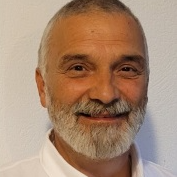Acoustics and Vibrations Analyses of Materials at Different Scales: Experimental and Numerical Approaches
A special issue of Applied Sciences (ISSN 2076-3417). This special issue belongs to the section "Acoustics and Vibrations".
Deadline for manuscript submissions: closed (31 December 2021) | Viewed by 46192
Special Issue Editor
Interests: nondestructive testing (NDT); acoustic emission; electromagnetic emission; critical phenomena in structural mechanics; critical phenomena in geophysics; fracture mechanics; static and dynamic analysis of high-rise buildings
Special Issues, Collections and Topics in MDPI journals
Special Issue Information
Dear Colleagues,
This Special Issue aims at providing a broad coverage of the recent theoretical, numerical, and experimental approaches to various problems related to acoustics and vibrations. Vibrations can occur spontaneaously or can be the result of anomalies in materials and structures at different scales. Thus, several methodologies that rely on the evaluation of the acoustic behavior and vibrational characteristics of the system can provide excellent insight into its dynamical properties as well as about its progress towards certain damage conditions. Therefore, this Special Issue welcomes research studies that evaluate the vibrational response and assess the state of materials and structures at different scales. Both experimental investigations and theoretical and computational studies are appreciated.
Prof. Dr. Giuseppe Lacidogna
Guest Editor
Manuscript Submission Information
Manuscripts should be submitted online at www.mdpi.com by registering and logging in to this website. Once you are registered, click here to go to the submission form. Manuscripts can be submitted until the deadline. All submissions that pass pre-check are peer-reviewed. Accepted papers will be published continuously in the journal (as soon as accepted) and will be listed together on the special issue website. Research articles, review articles as well as short communications are invited. For planned papers, a title and short abstract (about 100 words) can be sent to the Editorial Office for announcement on this website.
Submitted manuscripts should not have been published previously, nor be under consideration for publication elsewhere (except conference proceedings papers). All manuscripts are thoroughly refereed through a single-blind peer-review process. A guide for authors and other relevant information for submission of manuscripts is available on the Instructions for Authors page. Applied Sciences is an international peer-reviewed open access semimonthly journal published by MDPI.
Please visit the Instructions for Authors page before submitting a manuscript. The Article Processing Charge (APC) for publication in this open access journal is 2400 CHF (Swiss Francs). Submitted papers should be well formatted and use good English. Authors may use MDPI's English editing service prior to publication or during author revisions.
Keywords
- acoustics
- vibrations
- acoustic emission
- damage
- frequency evolution
- modal analysis
Related Special Issues
- Acoustics and Vibrations Analyses of Materials at Different Scales: Experimental and Numerical Approaches: Volume III in Applied Sciences (6 articles)
- Acoustics and Vibrations Analyses of Materials at Different Scales: Experimental and Numerical Approaches: Volume II in Applied Sciences (11 articles)





